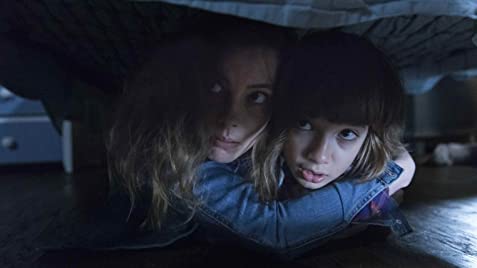The 400-Word Review: Come Play
By Sean Collier
October 28, 2020
BoxOfficeProphets.com

Yet the film keeps getting stuck in much more conventional settings — home, school — searching around corners for its invisible antagonist.
That’s only one of the ways that “Come Play,” written and directed by Jacob Chase, is locked between ambition and mediocrity. There’s a potentially interesting film around the edges of Chase’s script, but it lacks either the ability or the will to commit to those ideas.
“Come Play” is based on Chase’s short “Larry,” a 5-minute, atmospheric freakout. The whole of “Larry” took place in that parking booth; for a feature (even a short one), however, a twentysomething guy alone in a tiny room doesn’t exactly sparkle in a pitch meeting. So “Come Play” chiefly concerns Oliver, an elementary school student, and his quarreling parents, Sarah (Gillian Jacobs) and Marty (John Gallagher Jr.).
Oliver is autistic and non-verbal and has had difficulty socializing. When a mysterious storybook shows up on his smartphone — the tale of Larry, an outcast monster also in search of a friend — Oliver sees a connection. He’s less fond of the electrical problems that occur in the house when he reads about Larry; when he figures out that he can occasionally see the beast through his device’s camera, he starts to suspect Larry may have more sinister motives.
LIke “Child’s Play,” most of the action in “Come Play” moves through cycles of incredulity and belief; first no one believes Oliver, then Sarah does, then classmates do, then Marty is convinced. Unlike the ’80s camp-horror classic, however, “Come Play” doesn’t know what to do when it’s time to deliver, constantly shifting the rules on Larry’s abilities — he can travel through electricity, or he needs a working tablet, or maybe he’s corporeal sometimes — until it devolves into a watered-down “Babadook” imitation.
A later segment recreates the short film, bringing Marty and Oliver to that parking booth — where Marty works nights — for a suitably creepy meeting with Larry, lurking on the other side of the glass. It’s effective and teases at all the strengths “Come Play” might have had.
The suspense doesn’t last. For one thing: Who’s afraid of a monster named Larry?
My Rating: 5/10
“Come Play” will be released to theaters on Oct. 30. Please consider patronizing a drive-in cinema to mitigate the risk of COVID-19 spread.